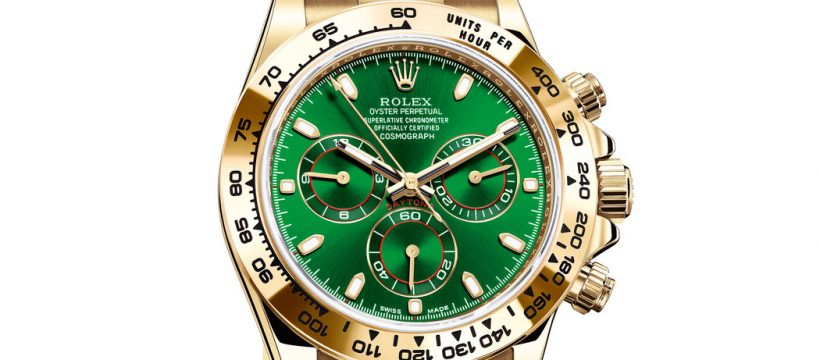The economy may be exhibiting signs of a slowdown, but prices for luxury watches continue to soar.
Take the gold Rolex Daytona 116508. Like all of its Daytona forebears, it is a mechanical cosmograph that functions as both timekeeper and glorified stopwatch, with three subdials that racecar drivers can use to measure distance and speed.
Although it can be ordered with champagne-colored or black dials, the current frenzy is centered around an iridescent green version. Authorized dealers are sold out, and prices on the secondary market have exceeded $50,000 — seemingly a record for the brand. (The list price is $34,650).
The watch was released in 2017 and did not generate much demand initially. Then in March of this year, John Mayer, one of the entertainment business’s most prominent watch collectors, showed his off in Hodinkee’s “Talking Watches” web series, calling it “a sleeper hit.”
By April, authorized Rolex dealers ran through their supplies. Earlier this month, prices on the secondary market were running between $50,000 and $70,000.
“That was all it took,” said Paul Altieri, the chief executive of the Bob’s Watches, a leading online dealer of pre-owned Rolexes based in Newport Beach, Calif.
For Rolex, it heralded a milestone. Until then, its heftiest-priced watches either had a storied provenance (like the “Paul Newman,” a 1960s Daytona with an Art Deco-style dial), were made in platinum or were encrusted in jewels.
But Jean-Frederic Dufour, a former LVMH executive who became the chief executive of Rolex in 2014, has helped move the Swiss watchmaker further into the high-end luxury market. The company increased promotion for its most aggressively priced watches.
High demand for its sports models, particularly among millennials, drove up value on the secondary market and fortified a sense among aficionados that Rolexes are wearable stocks.
“It’s risk-free fun,” said Jacek Kozubek, a partner at HQ Milton, a well-known secondary-market Rolex dealer in San Francisco.
No one outside Rolex knows how many green 116508s exist. Rolex is owned by the Hans Wilsdorf Foundation, which is so private that it doesn’t even have a website. “It’s like Willy Wonka’s chocolate factory,” Mr. Kozubek said. (A spokeswoman for Rolex declined to comment for this article.)
“My guess is no more than a few hundred,” Mr. Altieri said.
The company could increase production of the green 116508, but likely not by much. “Rolex is great at being everywhere and nowhere at once,” said Benjamin Clymer, the founder of Hodinkee.
William Barthman, an authorized Rolex dealer in the financial district of Manhattan, has a two-year waiting list. “I’m not even taking names anymore,” said Caitlin Hausser, the director of the store and the owner of her own green 116508.
She bought it in 2017 and gets constant offers from customers. “Three today!” she said on a recent Thursday.
Ms. Hausser has no intention of flipping it. “The feeling of having something that’s rare and that everybody wants is so much more valuable than ‘I had it and I sold it,’” she said.
Jacob Bernstein is a reporter for the Styles desk. In addition to writing profiles of fashion designers, artists and celebrities, he has focused much of his attention on L.G.B.T. issues, philanthropy and the world of furniture design. @bernsteinjacob
Source: Read Full Article
